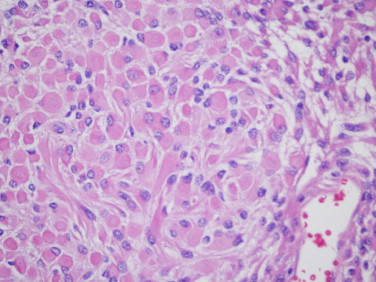Rhabdoid melanoma is a rare and very aggressive variant of melanoma, often associated with metastatic forms of the tumor. Although rarely, cases in which it manifests as primary melanoma have been described. This type of melanoma gets its name from its microscopic resemblance to rhabdomyosarcoma, a malignant tumor of muscle origin.

Histologically characterized by extensive polygonal cell laminae with abundant cytoplasm and eosinophilic inclusions, this melanoma has dislocated vesicular nuclei. Rhabdoid cells often lack melanin, the dark pigment that gives color to the skin, making the tumor different from the typical black or brown appearance of melanoma.
Diagnosis is based on histological and immunohistochemical analysis, processes that use antibodies to detect specific proteins in cells. In particular, in rhabdoid melanoma, a positive staining is observed with S100 and vimentin, sometimes also with keratins and desmin.
The clinical course of this melanoma is very aggressive, with a high risk of metastasis and a poor response to therapy, making the prognosis for patients with this variant of melanoma generally worse than for other forms. Despite this, treatment generally follows the same approach as for other types of melanoma, which can include surgery, immunotherapy, chemotherapy and radiation therapy.